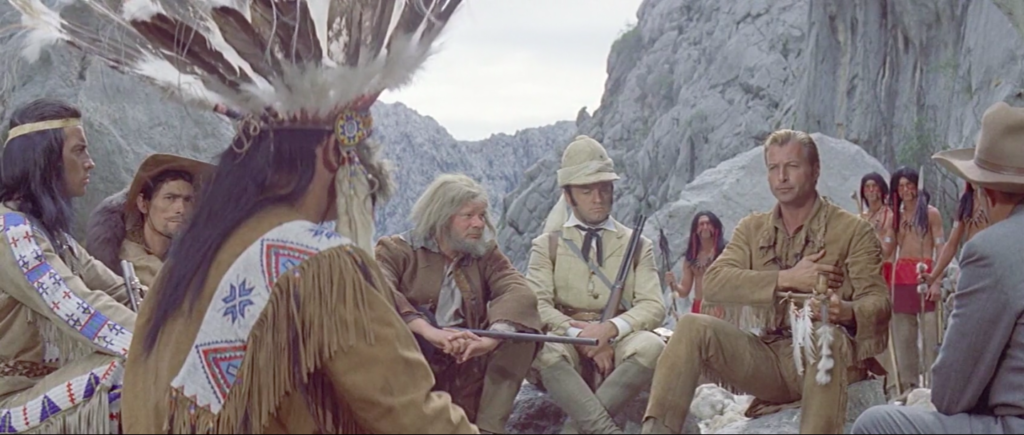
Karl May looms large in the landscape of German culture. His nineteenth century western adventure novels, influential in their day, re-entered German popular culture in the post-war period as the German film industry began to re-establish itself. The enduring popularity of Hollywood westerns in Germany inspired Constantin Film to adapt a number of May’s Winnetou novels for the screen; creating a resurgent Deutsche Indianertümelei.
The Winnetou films of the early sixties were predominantly shot in the former Yugoslavia on modest budgets. May’s books, and the subsequent films they inspired, were episodic in nature, recounting the heroic exploits of the trapper Old Shatterhand and his sidekick the Apache chief Winnetou. May’s novels provided the structural basis for the narratives of many of the earliest movie western franchises that, by the time Constantin Film was producing their Winnetou cycle, had begun to feel a little more than stale.
Der Schatz im Silbersee (1962) is the first of the Winnetou films produced by Constantin Film. Directed by Harald Reinl, a long time associate of Arnold Fanck, Der Schatz im Silbersee boasts some remarkably beautiful images of nature. Reinl’s background lends itself to the western genre well as evidenced by not only the vistas of his wide shots but also in his staging of the prerequisite action sequences. Reinl’s approach is highly traditional, drawing on the sensibilities of Raoul Walsh and John Ford as opposed to filmmakers like Anthony Mann or Robert Aldrich.
Der Schatz im Silbersee (or The Treasure Of Silver Lake) sees Old Shatterhand (Lex Barker) and Winnetou (Pierre Brice) helping a young man (Götz George) and his lover (Karin Dor) stop an evil bandit, named Colonel Brinkley (Herbert Lom), and his marauders from stealing an ancient tribal treasure. In classic western movie fashion white actors play indigenous people, the good guys exploit Native tribal resources just as much as the bad guys do, and there isn’t a task that can’t be accomplished without grit, guts, determination, and a square jaw.
Der Schatz im Silbersee is campy and plastic but there is a sincerity to its corniness. No one in the film fails to take their work seriously (even in a sea of ill-fitting wigs). Like Disney’s Davy Crockett pictures of the fifties there’s some heart to this German brand of American hokum. Der Schatz im Silbersee represents the kind of cinema that the signees of the Oberhausen Manifesto detested and rallied against that is neither politically honest nor explicitly revolutionary. Der Schatz im Silbersee is the cinema of the status quo; enjoyable but unremarkable.
